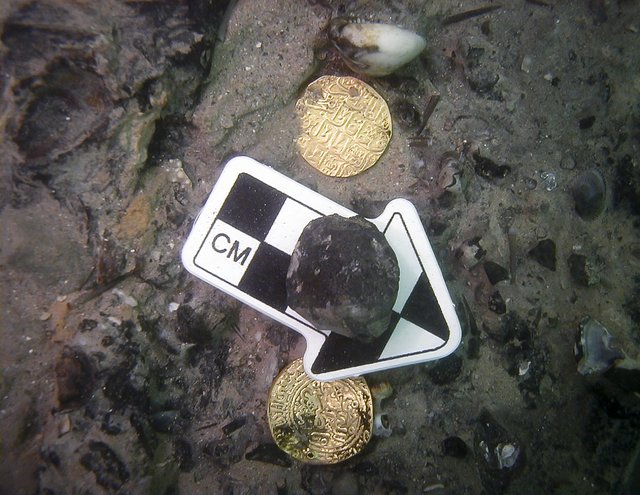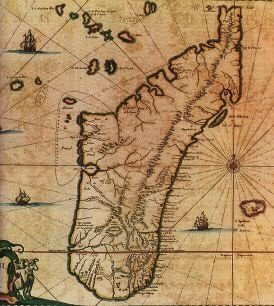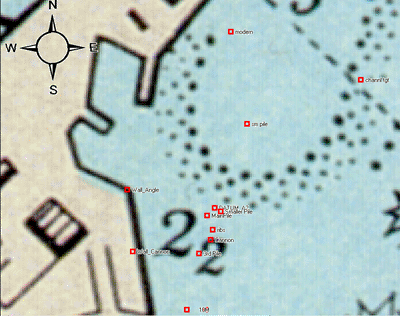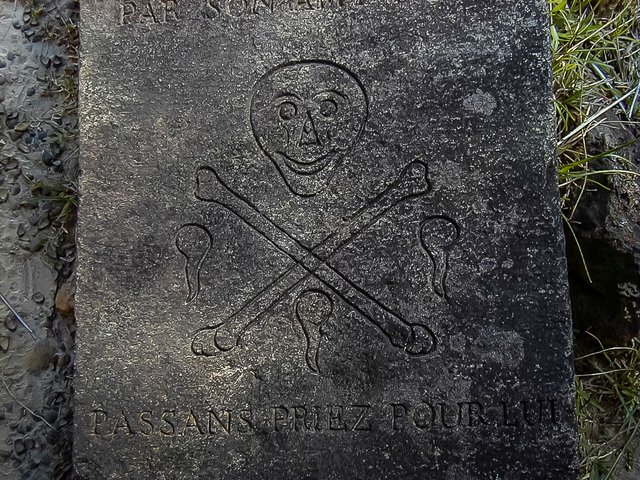The Hunt for the Pirate Captain Kidd and the Death of an Archaeologist
This is a story of the search for a pirate in the Indian Ocean. It took place on a small island off the coast of Madagascar, Africa. I had been employed to join a team that was funded by the Discovery Channel to search for the Adventure Galley, a ship belonging to the famous pirate Captain William Kidd. Before I left home, that was all I knew.

Friday
I left Austin, Texas on my way to Paris via Houston on an 11-hour flight. From Paris my second leg would take me to Antananarivo (“Tana”), the capital of Madagascar. There I would spend the night and then travel on by Malagasy Air, affectionately called “Mad Air” to Isle Sainte Marie off the northeastern coast of Madagascar. I would spend approximately 19-24 hours in the air. It was going to be a very long day.
I was not given much information before leaving and had to make plans quickly so on the trip over I tried to formulate thoughts for what my assignment would include. There were so many possibilities but I was only guessing. One thing I did know was that it would be an adventure no matter what the outcome.
Saturday
After arriving in Tana, after a hellish 21 hours of flights, and being crammed into small spaces that were very uncomfortable, I was just glad to be sitting on a bed. I was just glad to be off the plane even though I had to get back on one the next morning to finish the trip to Sainte Marie.
Sunday

On my first day on Sainte Marie, I didn't learn much about the project but did learn that we didn't have the necessary permits to conduct our excavation. The original agreement had only been verbal and we needed it in writing to proceed. One very interesting piece of information I did find out what that it appeared everyone thought I was a dendrochronology (dating trees based on their rings) expert. I was told the reason the expedition leader had me come along was because of my expertise in identifying wood samples. This was to be an important element of our study. The shipwreck we were looking for, the Adventure Galley, could possibly be identified by the type of wood that might be found and I would need to analyze the hull and confirm its identity. Other than knowing what dendrochronology means, I have no expertise to offer. I had to laugh. After hearing this, I decided to just see how things went. I had been on projects like this many times before and more times than not, treasure hunters don't find anything so I decided to wait and see if my dendrochronology expertise would really be needed. If so, I would probably break down and start laughing.

Monday
Later in the day, I went through the project's equipment. I was also going to be their primary operator for their remote-sensing equipment, skills I actually possess, and wanted to get a rundown for what they had. Their equipment included a 600-KHz side-scan sonar with an integrated Differential GPS. I had used this type of system many times before, but their system required a great deal of setup and had lot of bugs.
Next I went through their photography supplies because I was also the project photographer. We were going to create several photomosaic and I wanted to see what they had on hand. We would be shooting the ship's hull from various depths and I needed to make sure I was familiar with their camera. I would need to go slowly and make sure coverage was complete and didn't want my unfamiliarity with the equipment to slow me down.
I was also in charge of their underwater mapping system. This would consist of setting several datums that would allow for mapping the entire site. Datum by the way is just a fancy word for 3 foot piece of rebar that is hammered into the seafloor. Once the datums were in place. Each datum would be positioned with the DGPS, using a floating beacon and a rope pulled taunt. Once each datum's position was recorded, they would be measured to each other using metric underwater tapes. This would provide the foundation of our mapping system.
Thursday
The team already decided on which area to excavate first so once underwater, we would need to prepare the area. Once identified, a 2 x 2 m grid would be brought down and anchored in position. Each corner of the grids will be measured in position to no less than 3 datums that would be put in place. This will accurately position the grid and allow for measurements to be taken from each of the four corners to any artifacts found if there was no direct line of sight to the datums.
Tuesday
We have waited several days now to hear about our permit, but as we have waited, we are becoming more impatient. At last we have decided to start diving for fun and if by chance we find ourselves near the shipwreck, we might look around.
The chart above shows the location of the wreck site and a small island called "Pirate Island". This chart also shows the causeway and IIot Madame where we will be working. The causeway connecting Sainte Marie to Ilot Madame was built in the later part of the 19th century, and the bay would have been more accessible and ships with a deeper draught could have entered up to "Pirate Island" before its construction. This is where many pirates would have split up their stolen goods and hid from attacks. We had taken a remote-sensing team out to survey the island because pirates were known to have built tunnels throughout to protect their treasure, and it was hoped remote sensing data could identify their position. After the survey, team members were able to locate several tunnels running under the island. There are plans to penetrate the tunnels with a video camera to attempt to visually inspect inside at some point but not today.

Friday
We continue to wait for official approval to begin. I have been on Sainte Marie for 2 weeks now and am getting restless. Everything was supposed to have been set up and I am not sure what has happened. The President of Madagascar's daughter is helping and trying to push things along but has made it clear that it would be unpopular for her father to get involved because we are Americans. It seems there are 3 ministers whose approval we need but we cannot get them all to agree at the same time. We have received approval from 2, the Minister of Culture and the Minister of Justice. We have heard that the 3rd, the Minister of Transportation had verbally approved but we have not spoken to him directly because he is out of town, out of the office, or just out.
In the meantime, I have decided to write a paper on the social decay of an archaeological team in the Indian Ocean or possibly the insanity brought on by being trapped on a small island. I think in the archaeological community the later paper would be better received.
Sunday
After 4 weeks, I have started hearing rumors that we are going home early. I am not sure. I do know that the reporter contracted by the Discovery Channel has asked for his tickets to be rescheduled. He wants to leave earlier than originally planned. Now, everyone might be leaving earlier than planned if we don't get our permits.
We did find out that another archaeological team is on Sainte Marie. They are being led by and American archaeologist in search of another shipwreck belonging to John Paul Jones. From what I have learned, this American does not like the fact we are here. Funny that we had not heard another team was on this very small island until now. We also found out he is the reason our permits are being held up. He is doing everything possible to get our permits denied. He has been spreading rumors that we are here to pull up artifacts to sell for profit. We were later told that we should expect to receive a cease and desist order very soon.
Tuesday
Today there was a glimmer of hope that was immediately dashed. We found out that the 3 ministers were at a meeting with other cabinet ministers and were making time to discuss our project. But, once their meeting was over, the Minister of Transportation, just took off and went to a part of Madagascar where there appears not to be any phones and he could not be contacted. This was definitely on purpose.
Thursday
Today we receive the cease and desist notice. Interesting enough though, the other archaeological team received one as well. Their team now has to wait in hopes that we leave soon so they can get their permit reinstated. But now, we are not leaving until we have to just on principal.
Tuesday
It has gone from bad to worse. Now, not only do we not have our permits but our historian has had a relapse of malaria. Since he is the one doing most if not all of the talking with the Government of Madagascar, this will certainly not help our situation. Not that we have a great relationship with the Government as it is but now this. We are planning one last ditch effort to get our permits. If this fails, we are out of chances. By the way, our historian was also attacked by a lemur yesterday. These fuzzy little monkeys are not at all as sweet as they appear. We had to sew him up ourselves since there is little to no medical facilities on the small island of Sainte Marie.
This has been one of the strangest expeditions I have been on to date. I have seen character assassination, political scandal, competitive rivalry, stagnation and insanity. We have had a 3-month paid vacation on a beautiful island and were able to see part of the world few Americans ever get a chance to see, and there is a really good chance I will be coming back.
Friday
We had a great experience this morning. On the island there is a tradition that goes back for centuries. It must be remembered that most of the indigenous population practice a form of Catholicism with some traditional ancestral worship intermingled.
Every few years depending on their prosperity, family members go to their family cemetery and exhume the remains of the oldest mother and father of the family and have a bone cleansing celebration. This gives off the same air as a wake in the United States except for the exhumation. This is not a time to be sad or worried about the future. It is a time to celebrate the life of the person and to ask them to speak on behalf of the family for prosperity.
There was also one other woman exhumed for reasons that were unclear. The throng of people went to each grave, the mother first, then the father and finally the last woman. The bones, still wrapped in cloth from the last cleansing, were removed and the casket was emptied of all dirt or insects and then cleaned. Once the casket was clean, the bones were uncovered and the old cloth removed. New wrappings were brought out and the bones were placed on the new cloth. All bones were placed in their proper place starting with the skull. Once the skull was placed in the new lining, it was immediately covered with the new cloth out of respect of the individual. A new plastic lining was placed in the casket and then the bones wrapped in the new cloth placed inside. Finally the top of the casket was replaced and everyone lit candles and placed them on top of each casket. Flowers and herbs were placed on various caskets and more libations were poured as well as tobacco. This same process was involved with all three caskets. During this ceremony, everyone was singing, clapping, smiling, and laughing.
Once all bones have been cleaned, everyone gathers at the grave of the eldest male of the family and became very silent. The eldest male still alive lead the gathered family members in a prayer. There was a very strange silence and completely contrasted the boisterousness of the preceding rituals. After the prayer everyone starts singing again. This time however, although the words could not be understood, the melody was certainly that from, “When the Saints Come Marching Home.”
But like most family gatherings when people drink way too much, a fight always breaks out. We had no idea what started the altercation but we witness members of the family rolling around on the ground trying to punch one another until other family pulled them apart. Oh Family…
Sunday
It is now night and sheer disbelief is washing over me as I stand on a small airstrip on Sainte Marie. A plane called to pick up a dying man had just turned back and his now lifeless body lay inside a small van covered by a dirty white sheet. As the medical attendants climbed out of the van, the crowd, circling to watch the spectacle, dispersed. And, as the final radio call went out, car lights shining brightly on the runway went off one by one. Only one tiny light remained shining dimly from inside the van illuminating the frail, limp body held inside.
Earlier in the day, a local clinic needed medical supplies desperately for a seriously ill archaeologists. When we received the call, we knew it had to be the American archaeologist leading the other team. He had been struck down by an unknown illness thought to be malaria and he could not get the help he needed on Sainte Marie.
Rushing to the clinic, we found lying on a small bed covered with filthy linens a man struggling to breath. His sheets, stained and soaked from sweat, reeked of a sour and foul odor. His hair was wet and matted and his dull eyes only partially opened. The frightened expression on the attendant’s face told us all we needed to know. It was clear this man was in trouble and needed proper medical attention immediately. Removing a sick man from a remote location is not easy to say the least so we called the US Embassy in Antananarivo to organize the needed supplies and have a plane sent immediately. Since the flight should take just over an hour we decided not to waste any time. Straight away we wrapped the invalid in his bed sheets and moved him to a van waiting outside. We felt that getting to the airport would allow the medical team to get him on-board and back to the mainland as quickly as possible.
Needing to confirm the flight, we made another call only to find that US officials felt a landing at night posed too much risk and had not given the plane authorization to leave. The small airstrip on Sainte Marie had no runway lights and a plane could not land in the dark. Emotions ran high as everyone offered different ideas on what to do. After a few moments, we decided to line both sides of the runway with cars and use their headlights to provide the needed illumination. So, after gathering together several drivers and their cars and trucks, the small convoy headed off. Once again, the plane was on its way.
As the caravan pulled onto the tarmac another call went out. Amazement turned into horror when the Embassy informed us the plane was still on the ground. As onlookers gathered quietly around the van looking in through the large glass panel windows, frustration mounted. Still, another call went out in hopes of persuading Embassy officials to release the plane. At long last, the plane was given the go ahead.
Still, it would need lights. As cars and trucks began pulling around the airstrip, they were directed to one side or the other and each was given a small handheld radio. The van stopped just off the edge of the tarmac and positioned so the breeze blew in gently through the open doors.
As the hour past, our hopes began to fade. The plane should have already arrived but still we waited. An hour later the final call came in and the plane had just left. Unfortunately, we knew it was too late. The dying man continued to struggle. The attendants continued to monitor his condition although there was nothing they could do other than make him as comfortable as possible.
The crowd watched despondently as a man none of them knew took his last breath. Gasping deeply, the man writhed raising himself up. He thrashed about and fell back racked with pain. Finally his head lurched forward and his mouth and eyes went wide in shock and disbelief. He held on for only a few seconds and then fell back with great force. He did not move again and his eyes went black. One of the attendants took his pulse and gently laid his lifeless arm back down. It was over. The attendant closed his eyes and covered his body with the same dirty sheet he had been wrapped in when he left the hospital. Since there was no need to put anyone else at risk, the plane was called off. The body could be retrieved the following day.
As we stood in silence, we tried to understand the culmination of the day’s events. The attendants felt the man probably died from malaria. A few days earlier the hotel manager, where he stayed, first noticed a possible problem. Known to be a heavy drinker, he stopped drinking altogether and kept to his room. At one point the manager entered to find him coughing up blood. Immediately he was rushed to the hospital. Friends said he had refused to take malaria medication or spray himself with mosquito repellent. Malaria remains rampant on the island and without either, he put himself at great risk.
We all waited at the airport for well over an hour. No one knew quite what to do. Finally, the Mayor decided the body would be taken to the community center where it could remain until a plane left the following day. As it happened, the next morning when we boarded our plane to leave the island, so too did the body of the American. Unfortunately his seat was in the cargo hold, but finally on his way home.
The rest of the story will come later. For now, I am glad to be in the air, over the Atlantic on my way home.
Enjoying my content? Please help support my ongoing efforts by always resteeming.
Keep on writing and stay curious!
Congratulations! Your high-quality travel content caught our attention and has earned you a partial upvote. We love your hard work and hope to encourage you to continue to publish strong travel-related content. Thank you for using #travelfeed
Learn more about our travel project on Steemit by clicking on the banner above and join our community on Discord.